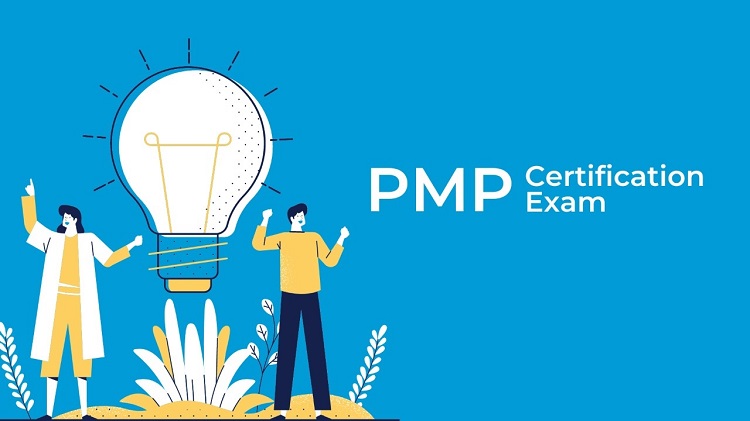In today's dynamic professional landscape, certifications are pivotal in enhancing career prospects and ensuring your skills are recognized globally. Among the myriad of credentials available, PRINCE2 Practitioner certification stands out as a symbol of excellence in project management. This study guide will delve into PRINCE2 certification, exploring its significance, the certification process, career benefits, and more.
Who Should Take the PRINCE2 Practitioner Certification?
The PRINCE2 Practitioner certification is appropriate for individuals tasked with project management responsibilities, whether it's within a formal project management role or as part of their daily job duties. The certification validates your comprehensive understanding and knowledge, enabling you to effectively apply and customize the PRINCE2 methodology in diverse project settings and situations.
However, acquiring the Practitioner qualification represents just one aspect of establishing yourself as a proficient and accomplished project manager. Complementing this certification with hands-on experience in managing projects and a commitment to personal and professional growth and additional training opportunities is crucial.
PRINCE2 Practitioner Certification Overview:
PRINCE2 Practitioner Certification is the next step for individuals already achieving the PRINCE2 Foundation Certification. It is designed to equip you with the advanced skills and knowledge required to manage projects using the PRINCE2 methodology. The certification signifies your ability to apply PRINCE2 principles in real-world project scenarios.
Before pursuing PRINCE2 Practitioner certification, you must meet certain prerequisites. These typically include holding the PRINCE2 Foundation certification or a relevant equivalent. Ensuring you meet these prerequisites is essential to embark on your journey towards becoming a PRINCE2 Practitioner.
Career Benefits with the PRINCE2 Practitioner Certification:
Earning the PRINCE2 practitioner certification opens doors to a multitude of career benefits. Let's explore these benefits in detail:
Project Management Skills Get Better:
PRINCE2 equips you with a robust set of project management tools and techniques. It empowers you to precisely initiate, plan, execute, and close projects. You become a valuable asset to organizations aiming for successful project outcomes by honing your project management skills.
Global Recognition As PRINCE2 Practitioner:
One of the standout features of PRINCE2 is its global recognition. The certification is respected and acknowledged worldwide. When you hold a PRINCE2 Practitioner certification, you join a prestigious community of project managers known for their expertise and competence.
Advance Your Career with PRINCE2 Practitioner Certification:
You're well positioned for career advancement with PRINCE2 Practitioner certification on your resume. Employers often seek certified project managers to lead critical projects and teams. The certification can be your ticket to promotions and higher job roles.
Get Better Job Scopes:
In today's competitive job market, having PRINCE2 Practitioner certification can set you apart from other candidates. It showcases your commitment to professional development and ability to deliver successful projects.
PRINCE2 Practitioner Certification Could Help You Earn High:
Research consistently shows certified project managers earn higher salaries than their non-certified counterparts. PRINCE2 Practitioner certification can lead to significant salary increases, making it a wise investment in your career.
Improved Risk Management:
Effective risk management is at the heart of PRINCE2. This certification equips you with the skills to identify, assess, and mitigate project risks. By minimizing project risks, you ensure smoother project execution.
ICBB Certification: Unlock How It Transforms Your Career
Quality Deliverables:
PRINCE2 emphasizes the importance of quality throughout the project lifecycle. As a PRINCE2 Practitioner, you'll learn to deliver high-quality project outcomes that meet or exceed stakeholder expectations.
Better Stakeholder Engagement:
Communication is vital in project management, and PRINCE2 strongly emphasizes stakeholder engagement. You'll discover how to foster effective communication with stakeholders, ensuring their needs and expectations are met.
Broaden Your Career Horizon:
PRINCE2 is not limited to a specific industry or project type. Its versatility allows you to apply its principles to various sectors, from IT and construction to healthcare and finance. This adaptability broadens your career horizons.
Foster Personal Growth:
Beyond its professional benefits, the certification fosters personal growth. It instills confidence, problem-solving skills, and a sense of achievement, empowering you to tackle complex projects and challenges.
Industries and Roles Where PRINCE2 Practitioner Certification is Valuable:
PRINCE2 Practitioner certification is highly valued in various industries and job roles. Here are some areas where PRINCE2 expertise is in high demand:
IT Project Management:
PRINCE2 is particularly valuable in IT, where complex projects require structured management.
Construction Management:
Construction projects involve numerous stakeholders and intricate processes, making PRINCE2 an asset in this field.
Healthcare Project Management:
Healthcare projects often have high stakes, and PRINCE2's focus on risk management is crucial.
Financial Services:
PRINCE2 is instrumental in managing projects related to regulatory compliance, software development, and more in the finance industry.
How to Earn the PRINCE2 Practitioner Certification?
If you're eager to embark on the journey to become a PRINCE2 Practitioner, here's a step-by-step guide to help you get started:
Meet the Prerequisites:
Ensure you meet the prerequisites, which typically involve holding the certification or an equivalent qualification.
Avail Training Options:
Explore the various training options available. You can opt for in-person training, virtual courses, or self-paced online learning. Choose the method that aligns best with your learning style and schedule.
Get Proper Study Materials:
Acquire study materials, such as official PRINCE2 manuals and practice exams. These resources will aid in your preparation for the Practitioner exam.
Prepare Effectively:
Dedicate sufficient time to exam preparation. Practice sample questions, review the PRINCE2 methodology, and seek clarification on challenging concepts.
Take the PRINCE2 Practitioner Exam:
Schedule and take the exam. The assessment evaluates your ability to apply PRINCE2 principles in real-world scenarios.
Get Your Certification:
Upon passing the exam, you will receive your PRINCE2 Practitioner certification, marking your official entry into PRINCE2 project management.
Concluding Thoughts:
In conclusion, PRINCE2 Practitioner certification is a powerful asset for anyone looking to excel in project management. It offers many career benefits, enhances project management skills, and opens doors to exciting industry opportunities. Whether you're an aspiring project manager or a seasoned professional, PRINCE2 Practitioner certification is a step towards professional excellence. Embrace the journey and unlock the potential for a successful and rewarding career.
.png)
.png)











